Box 13
Container
Contains 35 Results:
Synchrocyclotron copper coil transportation, 1948-1949
File — Box: 13, Folder: 21
Historical sketch
From the Sub-Series:
In the aftermath of World War II, nuclear power was seen as the science of the future. It held seemingly unlimited possibilities for peacetime use, as well as its already tested military purposes. The nation's leading universities all wanted to participate, and Carnegie Institute of Technology (CIT) was no exception. Dr. John Warner, head of CIT's Chemistry Department and Dr. Frederick Seitz, head of the Physics Department, had both worked on the Manhattan Project during the war,...
Dates:
1948-1949
Synchrocyclotron Design Committee, 1948-1952
File — Box: 13, Folder: 22
Historical sketch
From the Sub-Series:
In the aftermath of World War II, nuclear power was seen as the science of the future. It held seemingly unlimited possibilities for peacetime use, as well as its already tested military purposes. The nation's leading universities all wanted to participate, and Carnegie Institute of Technology (CIT) was no exception. Dr. John Warner, head of CIT's Chemistry Department and Dr. Frederick Seitz, head of the Physics Department, had both worked on the Manhattan Project during the war,...
Dates:
1948-1952
Synchrocyclotron installation, 1948-1949
File — Box: 13, Folder: 23
Historical sketch
From the Sub-Series:
In the aftermath of World War II, nuclear power was seen as the science of the future. It held seemingly unlimited possibilities for peacetime use, as well as its already tested military purposes. The nation's leading universities all wanted to participate, and Carnegie Institute of Technology (CIT) was no exception. Dr. John Warner, head of CIT's Chemistry Department and Dr. Frederick Seitz, head of the Physics Department, had both worked on the Manhattan Project during the war,...
Dates:
1948-1949
Synchrocyclotron monthly construction reports, 1948-1950
File — Box: 13, Folder: 24
Historical sketch
From the Sub-Series:
In the aftermath of World War II, nuclear power was seen as the science of the future. It held seemingly unlimited possibilities for peacetime use, as well as its already tested military purposes. The nation's leading universities all wanted to participate, and Carnegie Institute of Technology (CIT) was no exception. Dr. John Warner, head of CIT's Chemistry Department and Dr. Frederick Seitz, head of the Physics Department, had both worked on the Manhattan Project during the war,...
Dates:
1948-1950
Synchrocyclotron reports, memos, clippings binder, 1948-1955
File — Box: 13, Folder: 25
Historical sketch
From the Sub-Series:
In the aftermath of World War II, nuclear power was seen as the science of the future. It held seemingly unlimited possibilities for peacetime use, as well as its already tested military purposes. The nation's leading universities all wanted to participate, and Carnegie Institute of Technology (CIT) was no exception. Dr. John Warner, head of CIT's Chemistry Department and Dr. Frederick Seitz, head of the Physics Department, had both worked on the Manhattan Project during the war,...
Dates:
1948-1955
Synchrocyclotron transportation planning, 1948-1949
File — Box: 13, Folder: 26
Historical sketch
From the Sub-Series:
In the aftermath of World War II, nuclear power was seen as the science of the future. It held seemingly unlimited possibilities for peacetime use, as well as its already tested military purposes. The nation's leading universities all wanted to participate, and Carnegie Institute of Technology (CIT) was no exception. Dr. John Warner, head of CIT's Chemistry Department and Dr. Frederick Seitz, head of the Physics Department, had both worked on the Manhattan Project during the war,...
Dates:
1948-1949
"Why have a Synchro-cyclotron?" booklet, 1949
File — Box: 13, Folder: 27
Historical sketch
From the Sub-Series:
In the aftermath of World War II, nuclear power was seen as the science of the future. It held seemingly unlimited possibilities for peacetime use, as well as its already tested military purposes. The nation's leading universities all wanted to participate, and Carnegie Institute of Technology (CIT) was no exception. Dr. John Warner, head of CIT's Chemistry Department and Dr. Frederick Seitz, head of the Physics Department, had both worked on the Manhattan Project during the war,...
Dates:
1949
Annual Meeting of Executive Board, 1921
File — Box: 13, Folder: 28
Scope and Contents
From the Series:
The Research series is housed in four and a half boxes. The first box contains the publication Fundamental Research. This publication lists the current research projects of all the departments and their faculty members. After this box, the series is arranged alphabetically into subseries of research laboratories, centers, or institutes. There are oversized materials in this series. There are several substantial subseries including the Coal,...
Dates:
1921
Merchandise Manual for Shoe Departments, 1921
File — Box: 13, Folder: 29
Scope and Contents
From the Series:
The Research series is housed in four and a half boxes. The first box contains the publication Fundamental Research. This publication lists the current research projects of all the departments and their faculty members. After this box, the series is arranged alphabetically into subseries of research laboratories, centers, or institutes. There are oversized materials in this series. There are several substantial subseries including the Coal,...
Dates:
1921
First International Congress on Urban Transportation, 1966
File — Box: 13, Folder: 30
Scope and Contents
From the Series:
The Research series is housed in four and a half boxes. The first box contains the publication Fundamental Research. This publication lists the current research projects of all the departments and their faculty members. After this box, the series is arranged alphabetically into subseries of research laboratories, centers, or institutes. There are oversized materials in this series. There are several substantial subseries including the Coal,...
Dates:
1966
